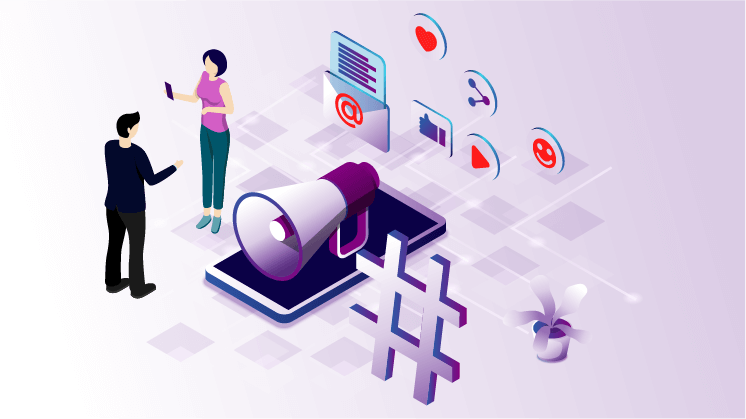Gamification has proven to be an excellent tool to attract audiences in different fields such as the Healthcare industry, Human resource management, Brand Marketing, and Online education, etc. However, Gamification in banking has received skepticism, or people see it as a fresh approach to provide services in the banking sector.
GAMIFICATION (A Robust Tool That Should Be Used In Banking Sector)
In the present day, businesses are frightening for consumers’ time and attention. For financial services, this is no different. Because people often think of financial services as dreary and complex, many banks and insurance companies have difficulty interacting with customers, especially when the connections are becoming more digitized. A sophisticated amount of user assignments can collect more data and real business insights through gamification in banking. Still, it can also lead to more (cross-sell) prospects and increase customer retention, including ROI and customer loyalty.
Why Banks Should Prefer Gamification in Their Services?
World’s renowned banks are more agile in competition and building a first-class customer experience. It’s a time to rebuild customer service, make regulatory changes, develop an environment with less control and more power to customers. For this purpose, many banks have turned to gamification and refine their service structure.
Usually, people are skeptical or see it as a new way to provide banking services. Gamification has advanced in many business areas, but the rigid banking world may not be in a rush to intervene. Still, there are ways to find the amazing facts and ideas about banking sector gamification in this article.
Why Gamification In Banking Is Vital?
It allows banks to spend a large amount of money to acquire the required or reliable depositors. With the help of gamification in banking, they can mark clients based on their specific requirements. Games attract people’s desire for entertainment, communication, social alliance, awards, and competition. Banks actively apply game mechanics and designs to incentivize people to pay by cards and open new accounts with benefits.
Let’s go over some ways to attract and retain banking customers through gamification:
1. Give Privileges Points:
When completing tasks, it is easy to find people who have played a game or deposit money in their account or other games, give them points. You can use a similar impression to shop with a card issued by a bank. One of the most straightforward gamification concepts for banking is to offer privileges points for shopping with associated retailers; after that, they can redeem points for gift vouchers or discounts in different activities such as traveling & hoteling.
2. Build Exciting Competition and Gifts:
One of the most common approaches for attracting new clientele is providing them value that meets certain situations, such as participating in a referral program. Many financial services offer a handsome amount of reward to both partner members and those who sign up for the service through the link.
The LevelCred plugin allows you to control hooks like never before, configure achievement based on user role and rank them with different Grade, Levels, and Badges helps your users reap lots of benefits every time they achieve points.
3. Make It Fun & Easy:
It is well received in education because students get bored with simply memorizing facts and solving equations all the time. And when people get bored, they lose focus. The same goes for bank clients. Subconsciously, they will lean toward services that are more fun. It would help if you designed an easy-to-win policy; the key is to make it fun, excitement and easy to perceive. If customers need to work hard to earn points, they will lose curiosity in a while.
4. Promote Your Products Through Gaming
Puzzles, contests, short videos, or mini-games can be used to illustrate or reveal topics. For example, customers can earn convertible points (incentives) by viewing informative videos on financial activities. In this way, you can increase your clients’ knowledge on financial matters to make intelligent choices about banking and investments in your services.
Arcade Game plugin is a maze game that rewards points to players. Users receive points by evading four colored ghosts and intervening energy particles. You can modify the rudiments of the arcade game, bestowing your preferences and set a limit on the number of points that users can earn at a specific time.
5. Add Social Networking Platforms
Always appreciate the achievement of your client, allow them to share their stories, skills, or any features they like with their families and groups on social media. In addition to attracting a target audience, you also get unreceptive advertising because your clients are spreading information about your services.
Gain Valuable Information About Customers
Gamification in banking services can open up a trove of client’s data. Games require activities and these actions provide huge digital impressions. Professional methods of revealing and interpreting these suggestions can allow banks to study their clients’ behaviors. It shows the number of active users, their level of awareness in the banking industry, how much investment they have, and the objective they are trailing. When people are amused, they tend to share personal information more generously. At the same time, through social networks and gamification functions, banks can obtain a unique identity, which ultimately supports their credit rating.
Conclusion
Gamification will not only affect existing financial services; it can also open up a new asset range. The dimension of real-time activities and the availability of real-time risk metrics can enable the trading behavior of users. These gamification developments are expected to increase the size of the financial services industry meaningfully. Overall, gamification is expected to significantly increase the scope and scale of banking, trade, and investment in the future. Companies that successfully use gamification have a better understanding of clients and provide them with tailored solutions that will strengthen their competitive rating and improve economic efficiency.


